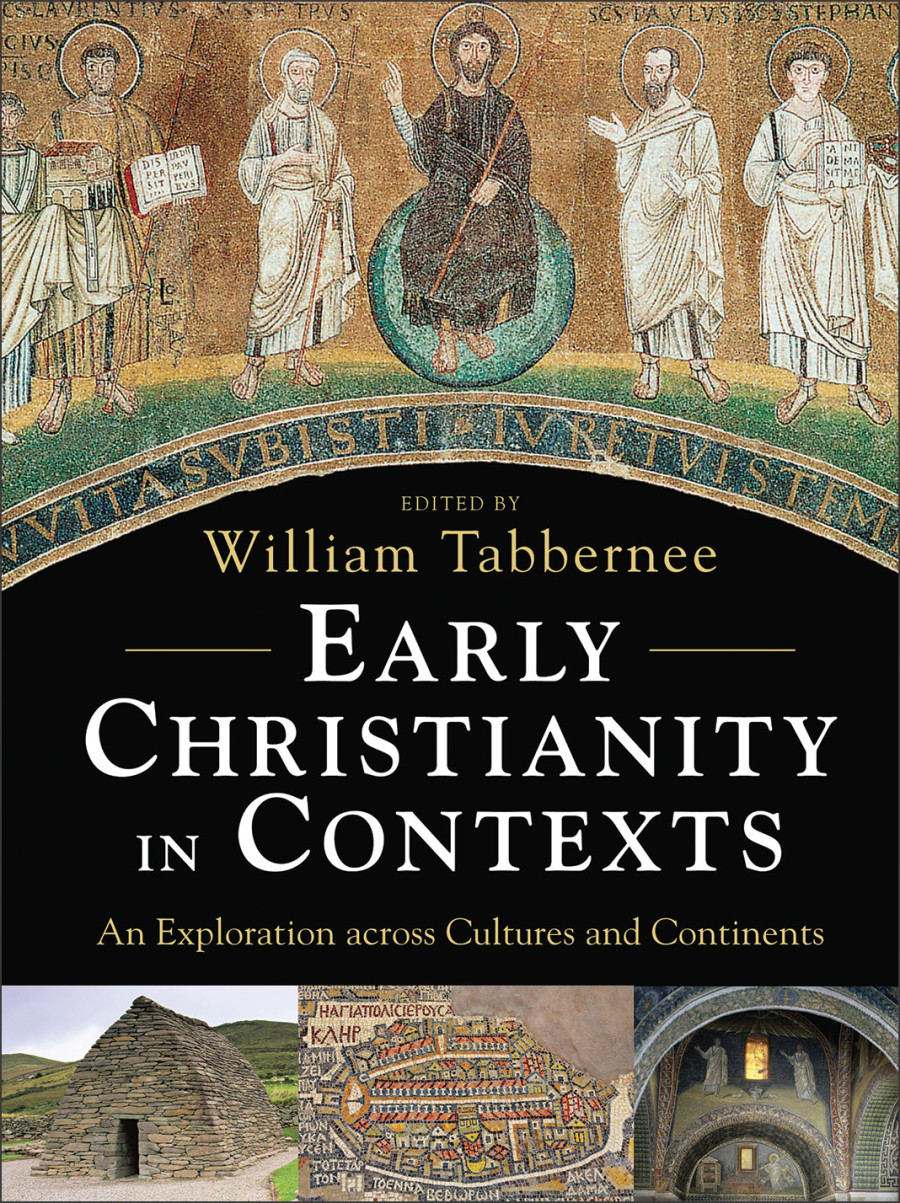In Early Christianity in Contexts, editor William Tabbernee provides an overview of early Christian history that focuses on the various locations and cultural contexts within which Christianity developed. The book, which is the cumulative product of eighteen contributors, brings contextual particularity to the study of early Christian history. In a field that can too often over-homogenize the geographic and cultural diversity of Christian development, Early Christianity in Contexts seeks to “provide a comprehensive and insightful understanding of the diverse nature of early Christianity in its multifaceted contexts” (pg. 10).
In order to present the specific regional and contextual developments of early Christianity as fully and as sensitively as possible, Early Christianity in Contexts is uniquely organized according to geographic regions. Each of the chapters highlight significant archaeological evidence, including inscriptions, coins, artwork, and architecture. The chronological and geographic sweep of the book is expansive. It spans developments from roughly a millennium, extending from the first century BCE to the ninth century CE, and it covers most of the known ancient world: from Hispania in the west to China in the east and from Caledonia in the north to equatorial Africa in the south.
The first chapter begins in the Roman Near East, which includes the important early Christian cities of Jerusalem and Antioch, before the next chapters move beyond the eastern boundaries of the Roman Empire. These chapters examine the development of Christianity in northern Mesopotamia, Persia, the Caucasus range, central Asia, India, and China. These chapters detailing early Christianity in the Far East provide the most fascinating contributions of the book’s methodological approach. The section discusses a bilingual stele (Syriac and Chinese) erected in 780, which discusses the arrival of Christianity to China through a priest named Aluoben in 635 CE. By highlighting archaeological data, these chapters help identify aspects of early Christianity in the far eastern regions that more literarily focused studies often unfortunately overlook.
The fifth chapter returns to the imperial borders and examines regions along the Nile River, including Alexandria, Axum, and Nubia, before the sixth chapter surveys Christian development in North Africa. The final four chapters move towards the west of the empire, moving from Asia Minor, Cyprus, the Balkan Peninsula, Italy, Germania, Gallia, Hispania, and Britannia, before concluding with a brief study of Caledonia, Hibernia, and Germania north of the imperial borders.
Early Christianity in Contexts’ methodological focus on geographic and contextual diversity viewed through material and cultural evidence is a welcome addition to the study of early Christian history. The book highlights the particular way in which Christianity developed in different locations, emphasizing the cultural effects of development such as architectural and artistic expressions. Such a focus also introduces lesser known figures who are regionally important but rarely receive significant treatment in other surveys. For example, one is able to learn of the Syriac writing Acts of Addai, which “ascribes to Addai the evangelization of Edessa and Amida” in Roman Mesopotamia (pg. 81). While Addai is a key figure for Christianity in Roman Mesopotamia, he rarely figures in more traditional treatments of early Christian history.
Additionally, Early Christianity in Contexts is able to avoid a western-centric survey of early Christianity by demonstrating how early Christianity spread east as well as west. Similarly, it rejects an over-homogeneous presentation of early Christianity. The emphasis on the diverse geographic and cultural contexts helps contribute to a more realistic depiction of the variegated development of early Christianity.
The methodological focus that produces the book’s strengths also results in the book’s limitations. A huge amount of geographic and historical information is required in each section, and this makes the book more of a reference work than a sustained argument. Some sections contain extended historical and archaeological discussions that sometimes read like a mix between an ancient history and a bible atlas. Discussions of key figures, concepts, and literary works appear throughout the chapters, but there is little room to engage in extended studies for those previously unacquainted.
The lack of synthetic analysis, too, can leave the reader wondering about the extent of coherence that the title’s singular Early Christianity suggests. The general introduction is helpful in suggesting that there is coherence among the disparate regions; however, in the midst of the significant data presented in the following chapters, it can sometimes be difficult to see the connections.
Ultimately, the inherent difficulty of the historical task becomes the inherent limitation of the book: how to realistically present historical diversity while maintaining any sense of continuity between the various events. In every historical work, something must be brought to the foreground and something must remain in the background. In the majority of introductory works concerning early Christianity, the key people and events are featured with the unfortunate side effect of skimming over the contextual importance of the various geographical areas in which these events took place. In this book, the emphasis is opposite, so that the cultural contexts take the foreground. Early Christianity in Contexts is to be highly valued for its distinctive methodology and its intent to give sufficient attention to the contextual diversity of early Christian development.
The Bottom Line: By highlighting significant archaeological data, Early Christianity in Contexts focuses on regional variations in the development of early Christianity and is an important contribution for understanding both the hard evidence and the particularity of early Christian history.
Review by Eric Covington
University of St Andrews





Leave a Reply
Your email is safe with us.